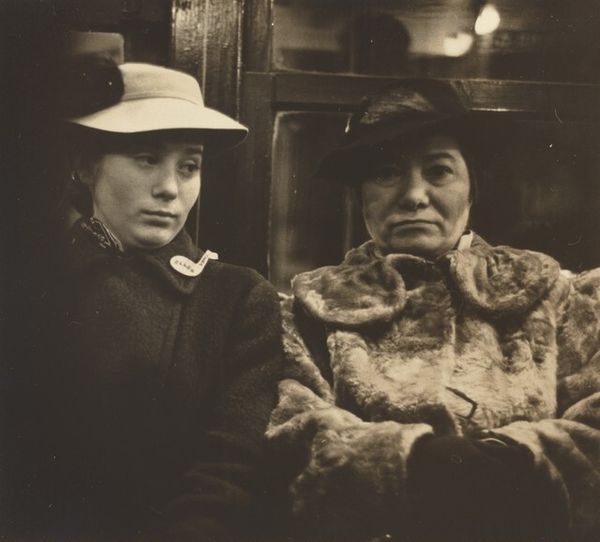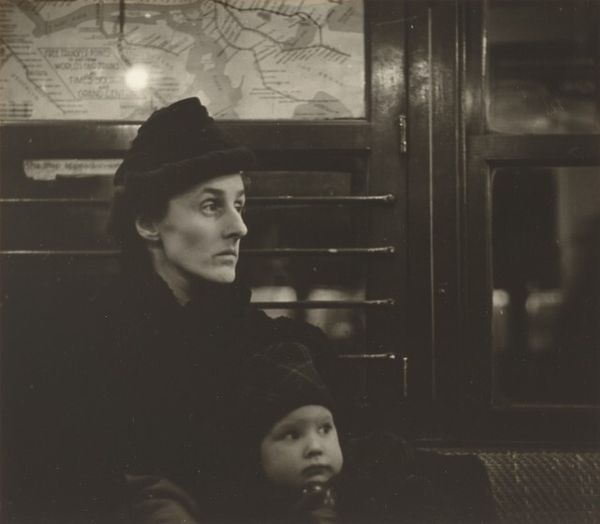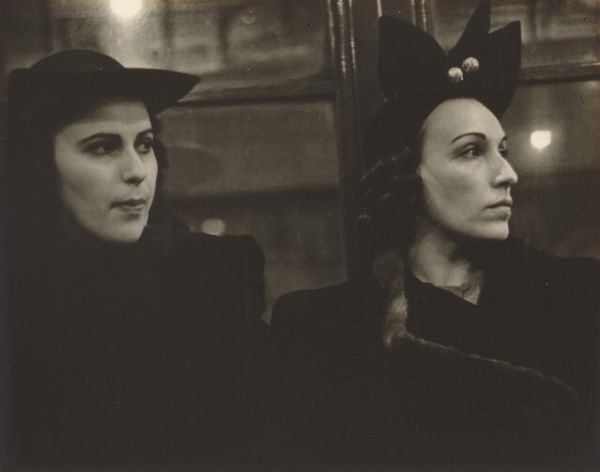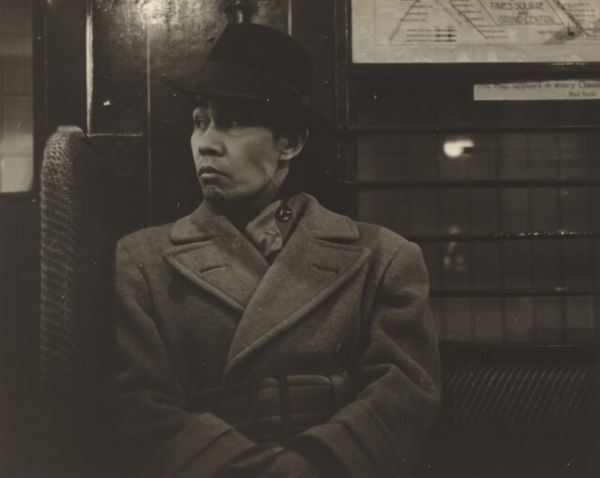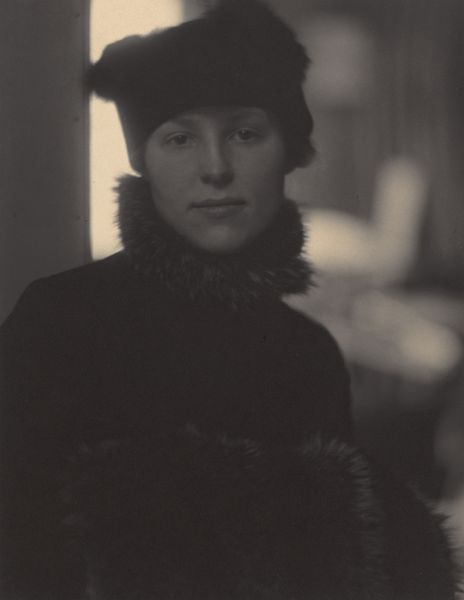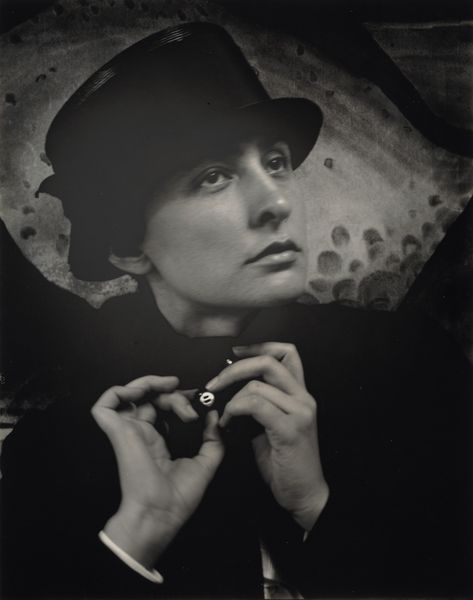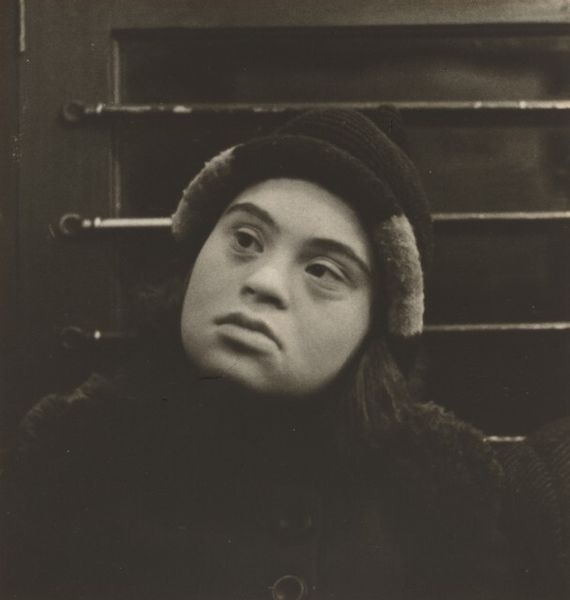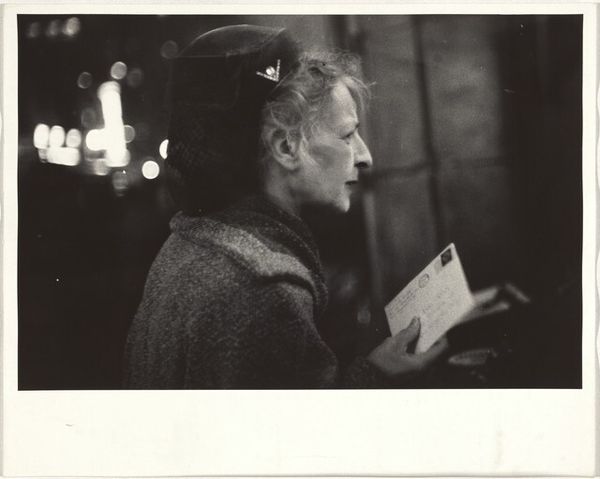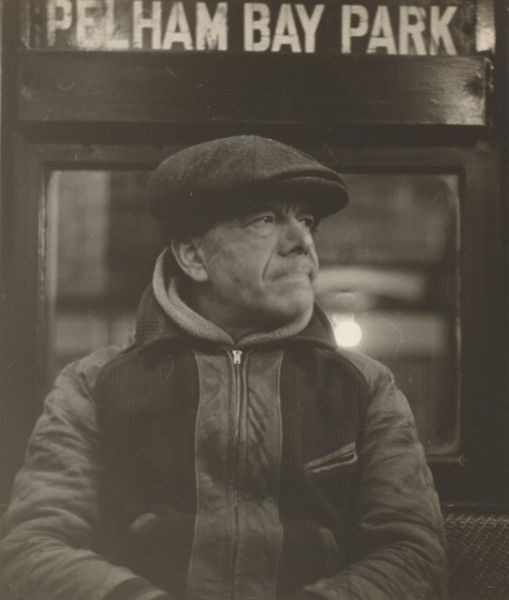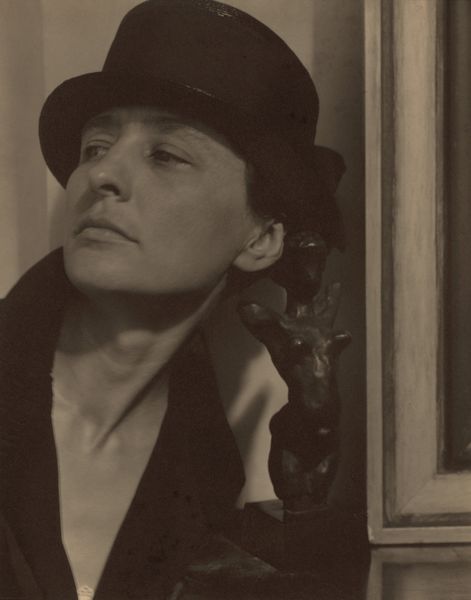
photography, gelatin-silver-print
#
portrait
#
archive photography
#
street-photography
#
photography
#
historical photography
#
gelatin-silver-print
#
ashcan-school
#
modernism
#
realism
Dimensions: sheet: 13.2 x 11 cm (5 3/16 x 4 5/16 in.)
Copyright: National Gallery of Art: CC0 1.0
Curator: This image is entitled "Subway Portrait" by Walker Evans, created between 1938 and 1941. It's a gelatin-silver print. What strikes you about it? Editor: Initially, it’s the feeling of candidness. It's a quiet, almost melancholic snapshot of a woman on the subway. She seems lost in her own thoughts. The textures are so evocative, from the fur to the grimy window. Curator: Indeed, it’s deceptively simple. Evans surreptitiously captured everyday people in transit, unknowingly revealing a raw authenticity. Look at her averted gaze. Does it recall any archetypes for you? Editor: Absolutely. Her attire places her within a specific socioeconomic bracket, yet there’s an underlying vulnerability. It reminds me of the silent film era, where societal expectations caged women—beauty standards, social mobility, the limitations placed upon them during this period of pre-war America. Curator: Yes, and notice the composition. The subway map in the background provides context, literally a journey, but also adds to the layered symbolism of societal paths and personal direction. The gaze and costume say so much, but so does this contextual framing of the location in the frame. Editor: The Ashcan School influence is also very prominent. This artwork showcases raw street scenes of life, with very direct tones, stripped of artificial grandeur. This aesthetic choice critiques power structures by focusing on ordinary people often ignored in the larger social narrative. This focus challenges dominant portrayals of beauty and success in art during the era. Curator: And that makes sense, when considering that in those years, social realism sought truth through documenting real people's experiences in that moment of economic and global transformation. Also, photography carries with it the assumed symbolism of objective representation of "reality." The gaze away and avertedness of it brings about questions of how representation always entails symbolic value. Editor: By giving dignity to those on the margins, the composition asks us to reconsider what’s truly valuable—it's a call to social awareness. The composition gives visual weight to experiences often unseen and ignored. Curator: Yes. For me, seeing how archetypes play across her gaze, attire, and place lets me glimpse the soul, revealing the archetypal commuter or everyday traveler and the universal experience of existing in an urban center during the period between the world wars. Editor: And for me, thinking of what it meant for Evans to show the realities of these subway passengers during that specific pre-war period of heightened socioeconomic awareness adds layers of importance to each detail captured.
Comments
No comments
Be the first to comment and join the conversation on the ultimate creative platform.

